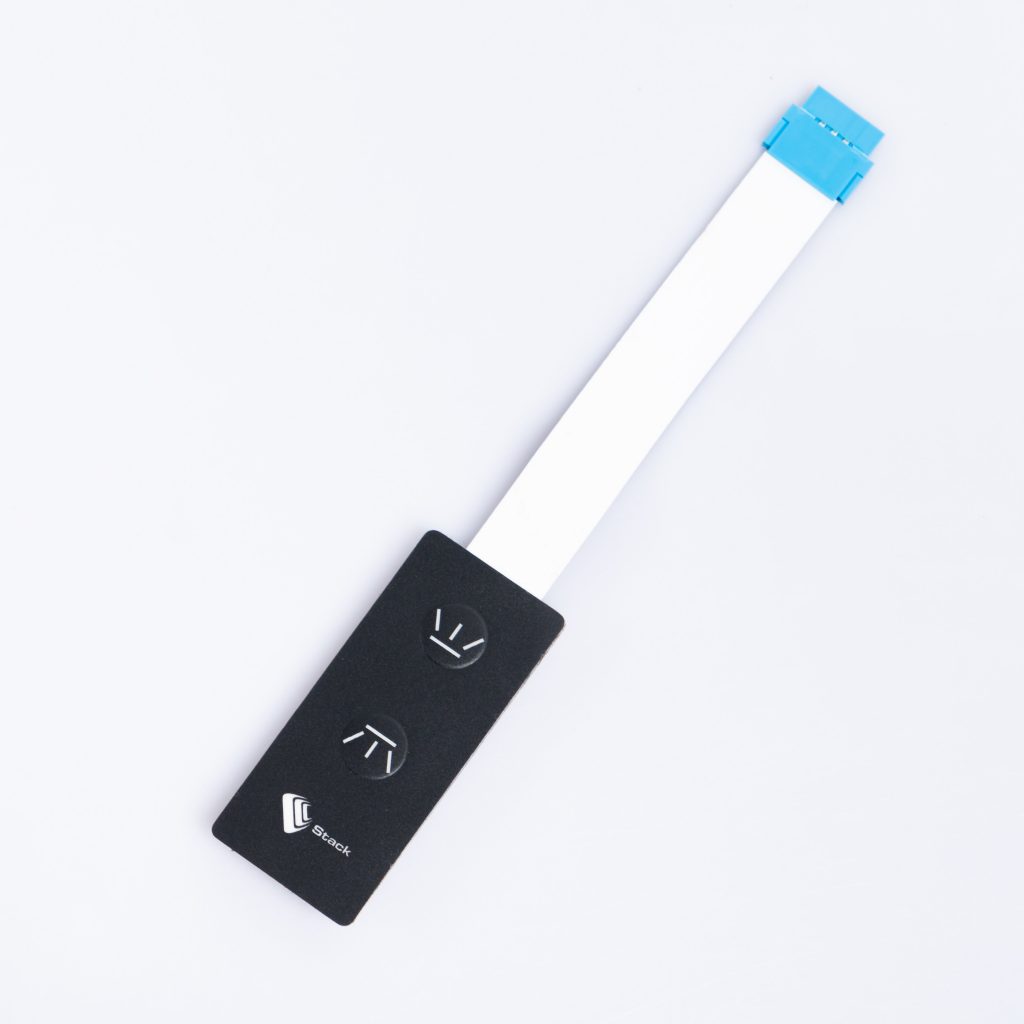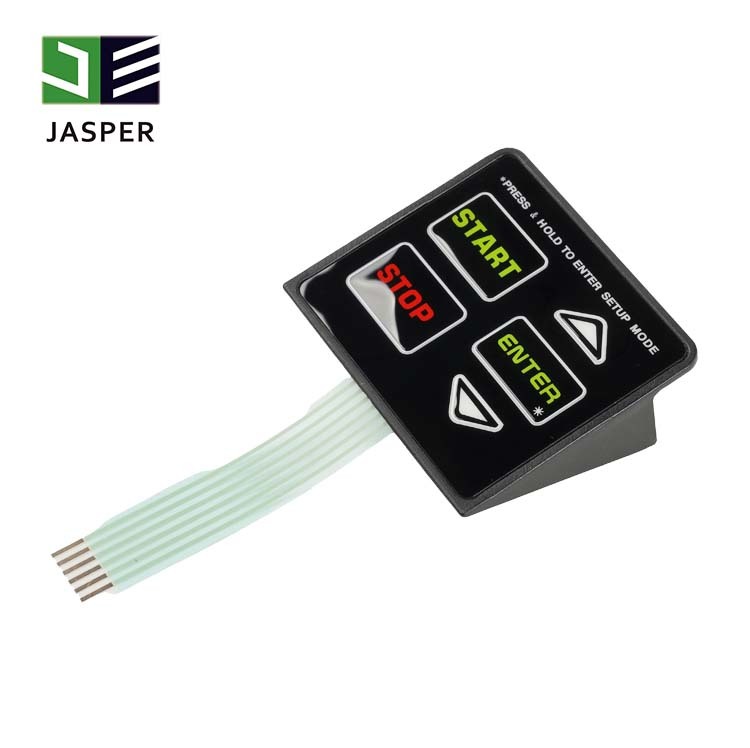The Production Process Behind Membrane Layer Change: What You Need to Know
The manufacturing procedure behind membrane layer switches over combines cautious style, material selection, and top quality control. It starts with understanding the intricacies of membrane switch style and advances with numerous stages, consisting of product choices and printing strategies. Each phase plays an important role in making certain capability and longevity. Nevertheless, the complexities of layer building and construction and the strenuous screening requirements might disclose understandings that are not right away evident. What exists past these foundational components?
Comprehending Membrane Switch Design
Although membrane switches may appear basic in the beginning look, their style involves elaborate factors to consider that guarantee capability and longevity. The design procedure begins with a comprehensive understanding of user needs, including the interface's desired application and environmental variables. Ergonomics is a key component, as the design has to promote simplicity of use while guaranteeing that tactile comments satisfies user expectations.Moreover, the layering of components, such as visuals overlays, adhesive layers, and conductive traces, must be exactly crafted. membrane switch. This split arrangement not just influences the switch's responsiveness however additionally influences its durability. Interest is provided to the sealing methods used to protect versus wetness and dust, which can jeopardize efficiency. In addition, layout factors to consider expand to appearances, where color plans and aesthetic quality enhance user experience. Eventually, the design of membrane layer switches equilibriums capability, user experience, and resilience, ensuring that they meet the demands of different applications successfully
Materials Used in Membrane Layer Change Manufacturing
When selecting products for membrane layer button production, it is important to contemplate both performance and resilience. The main materials include polyester and polycarbonate movies, which supply adaptability and stamina. These films are usually covered with adhesive to guarantee proper bonding to substratums. Conductive inks, commonly made up of silver or carbon, are crucial for creating electric links within the switch, permitting reputable operation.Additionally, a safety layer, such as a difficult coat, is often applied to improve scratch resistance and long life. The choice of backing product, such as acrylic or foam, can substantially influence the switch's responsive feel and total user experience. Various environmental variables, including temperature and humidity, must guide material choice to guarantee peak efficiency in details applications. Inevitably, the appropriate combination of materials adds to the membrane layer switch's functionality and life expectancy, making educated options necessary for makers.
The Printing Refine: Creating Video and Text
The printing process in membrane layer button production plays a significant role in generating top quality graphics and message. Different graphic layout methods are used to assure aesthetic charm and functionality, while mindful ink choice approaches are essential for resilience and performance. Understanding these aspects is essential for accomplishing finest cause membrane button style.
Graphic Style Techniques
Graphic style methods play an essential function in the printing procedure of membrane switches, as they specify exactly how graphics and message will eventually show up on the last product. Effective graphic design entails the critical use of typefaces, layouts, and colors to boost readability and aesthetic charm. Developers commonly utilize vector graphics for scalability, making certain that pictures remain sharp at different dimensions. Furthermore, interest to contrast and positioning is important, as it affects user communication and aesthetic high quality. The consolidation of branding elements, such as logo designs, must be managed with like maintain brand name honesty. In general, thoughtful visuals style techniques contribute substantially to the functionality and appearance of membrane layer switches, affecting individual experience and product efficiency.
Ink Choice Methods
Choosing the ideal ink is vital for attaining the desired visual quality and longevity in membrane switch production. Different ink kinds are made use of, including solvent-based, water-based, and UV-curable inks. Each type provides distinctive qualities, such as attachment, resistance, and flexibility to environmental elements. Solvent-based inks are typically preferred for their toughness and vivid shades, while water-based inks are a lot more eco pleasant yet might have constraints in attachment. UV-curable inks supply quick treating and durable efficiency. In addition, shade matching strategies ensure that the chosen inks line up with design specifications. Ultimately, the choice of ink need to think about aspects such as application technique, substrate compatibility, and end-use requirements to achieve superior outcomes in membrane layer button graphics and message.
Layer Building And Construction and Setting Up

Product Choice Refine
A mindful option of materials is vital in the manufacturing procedure of membrane layer buttons, as i loved this it straight affects capability and resilience. The main materials utilized include polyester, polycarbonate, and various conductive inks. Polyester is typically preferred for its exceptional resistance to chemicals and abrasion, making it ideal for rough settings. Polycarbonate, on the various other hand, gives premium clarity and effect resistance, which is helpful for applications needing visibility and toughness. Conductive inks, normally composed of silver or carbon, are crucial for producing trustworthy electric pathways. Additionally, the choice of glue products affects the overall stability of the switch - membrane switch. Assessing elements such as environmental direct exposure, responsive comments, and aesthetic needs overviews makers in choosing the most effective materials for their details applications
Layer Bond Methods
Adhering layers in membrane layer switch construction is an essential procedure that guarantees functionality and long life. Different adhesion strategies are utilized to safeguard suitable bonding between layers, which typically consist of making use of adhesives, heat, and stress. Pressure-sensitive adhesives (PSAs) are frequently used for their convenience of application and instant bonding capabilities. In addition, thermal bonding techniques can be used, where heat is utilized to trigger adhesive properties, safeguarding a strong bond. The option of adhesion technique largely relies on the products involved and the details application requirements of the membrane layer switch. Appropriate placement and uniform application of adhesives are vital to avoid issues, securing the button runs efficiently throughout its designated lifespan.
High Quality Control Actions
Guaranteeing high quality control throughout the layer construction and setting up of membrane switches is necessary for keeping performance and dependability. This procedure typically includes a number of essential procedures, consisting of comprehensive assessments at each phase of manufacturing. Manufacturers utilize sophisticated screening techniques, such as peel examinations and attachment analyses, to confirm the stability of layer bonds. Furthermore, aesthetic examinations are performed to identify any problems in printing or material variances. Environmental conditions, such as temperature and humidity, are thoroughly kept track of to ensure suitable healing and More Help attachment. In addition, normal calibration of equipment assists preserve exact production criteria. By executing these quality assurance steps, producers can significantly reduce the risk of product failing, assuring that the final membrane layer switches fulfill the called for specs and consumer assumptions.
Checking and High Quality Control Steps

Technologies in Membrane Layer Switch Technology
As innovations in innovation remain to advance, membrane layer switches are profiting from ingenious developments that boost their performance and user experience. One remarkable advancement is the integration of capacitive touch modern technology, which enables more instinctive and responsive customer interfaces. This shift not just enhances visual appeals yet likewise lowers mechanical deterioration, extending the life expectancy of the switches.Additionally, advancements in visuals overlay products have brought about boosted toughness and resistance to environmental aspects such as moisture and UV light. These materials currently offer improved clarity and brightness, more elevating the aesthetic appeal.Furthermore, the consolidation of clever technology is changing membrane layer switches into interactive control board, enabling connectivity with IoT gadgets. This connection fosters a seamless customer experience, leading the way for applications in different sectors, from healthcare to consumer electronics. Jointly, these technologies position membrane changes as essential components in contemporary gadget layout.
Frequently Asked Questions
For how long Does the Membrane Layer Switch Over Production Refine Take?
The period of the membrane layer button production process can vary significantly. Aspects such as intricacy, products used, and production volume influence timelines, with common production ranging from a few days to several weeks for completion.
What Are the Common Applications for Membrane Switches?
Membrane buttons are generally made use of in various industries, consisting of auto controls, household appliances, clinical tools, and customer electronic devices (membrane switch). Their convenience and durability make them suitable for applications calling for straightforward user interfaces and trustworthy performance in diverse environments
Can Membrane Switches Over Be Custom-made for Certain Requirements?

What Is the Life expectancy of a Regular Membrane Switch?
The life expectancy of a regular membrane layer switch varies, but typically, it varies from 1 to 5 million cycles. Variables such as use, setting, and worldly quality considerably affect toughness and overall performance in time.

Are Membrane Layer Switches Over Eco-friendly?
The ecological friendliness of membrane switches varies. Some products made use of might not be recyclable, while others can be eco-friendly. The total influence depends upon producing practices and materials, requiring careful factor to consider throughout choice and disposal. The production process behind membrane switches over combines cautious design, product option, and high quality control. It begins with recognizing the details of membrane switch layout and advances through various phases, consisting of product selections and printing methods. When choosing products for membrane layer switch production, it is necessary to consider both efficiency and toughness. A careful option of materials is essential in the production process of membrane layer switches, as it straight influences capability and sturdiness. The selection of bond method mainly depends on the materials entailed and the particular application needs of the membrane button.
Comments on “Why membrane switch interfaces are reshaping the dynamics of healthcare equipment”